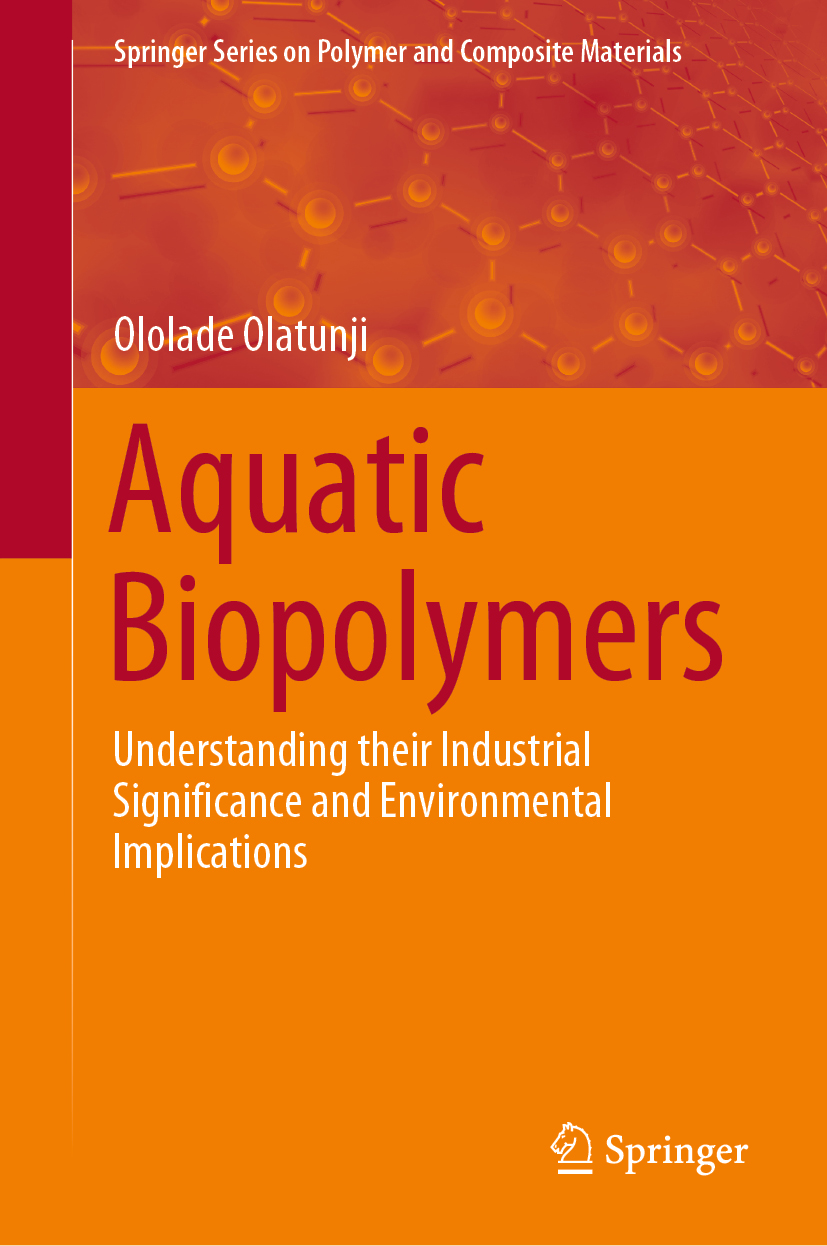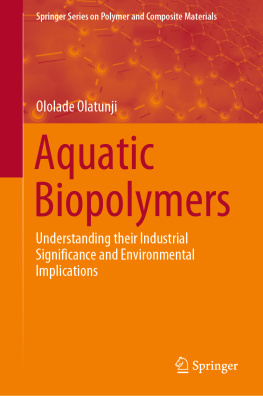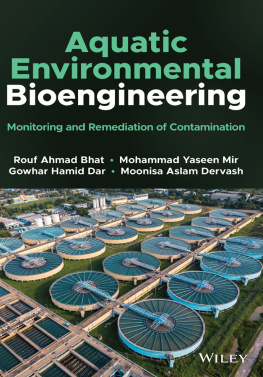Ololade Olatunji - Aquatic Biopolymers: Understanding their Industrial Significance and Environmental Implications
Here you can read online Ololade Olatunji - Aquatic Biopolymers: Understanding their Industrial Significance and Environmental Implications full text of the book (entire story) in english for free. Download pdf and epub, get meaning, cover and reviews about this ebook. year: 2020, publisher: Springer Nature, genre: Children. Description of the work, (preface) as well as reviews are available. Best literature library LitArk.com created for fans of good reading and offers a wide selection of genres:
Romance novel
Science fiction
Adventure
Detective
Science
History
Home and family
Prose
Art
Politics
Computer
Non-fiction
Religion
Business
Children
Humor
Choose a favorite category and find really read worthwhile books. Enjoy immersion in the world of imagination, feel the emotions of the characters or learn something new for yourself, make an fascinating discovery.
- Book:Aquatic Biopolymers: Understanding their Industrial Significance and Environmental Implications
- Author:
- Publisher:Springer Nature
- Genre:
- Year:2020
- Rating:4 / 5
- Favourites:Add to favourites
- Your mark:
- 80
- 1
- 2
- 3
- 4
- 5
Aquatic Biopolymers: Understanding their Industrial Significance and Environmental Implications: summary, description and annotation
We offer to read an annotation, description, summary or preface (depends on what the author of the book "Aquatic Biopolymers: Understanding their Industrial Significance and Environmental Implications" wrote himself). If you haven't found the necessary information about the book — write in the comments, we will try to find it.
Ololade Olatunji: author's other books
Who wrote Aquatic Biopolymers: Understanding their Industrial Significance and Environmental Implications? Find out the surname, the name of the author of the book and a list of all author's works by series.
Aquatic Biopolymers: Understanding their Industrial Significance and Environmental Implications — read online for free the complete book (whole text) full work
Below is the text of the book, divided by pages. System saving the place of the last page read, allows you to conveniently read the book "Aquatic Biopolymers: Understanding their Industrial Significance and Environmental Implications" online for free, without having to search again every time where you left off. Put a bookmark, and you can go to the page where you finished reading at any time.
Font size:
Interval:
Bookmark:

The Springer Series on Polymer and Composite Materials publishes monographs and edited works in the areas of Polymer Science and Composite Materials. These compound classes form the basis for the development of many new materials for various applications. The series covers biomaterials, nanomaterials, polymeric nanofibers and electrospun materials, polymer hybrids, conducting polymers, composite materials from macro- to nano-scale, and many more; from fundamentals, over the synthesis and development of the new materials, to their applications. The authored or edited books in this series address researchers and professionals, academic and industrial chemists involved in the areas of Polymer Science and the development of new Materials. They cover aspects such as the chemistry, physics, characterization, and material science of Polymers, and Polymer and Composite Materials. The books in this series can serve a growing demand for concise and comprehensive treatments of specific topics in this rapidly growing field.
More information about this series at http://www.springer.com/series/13173

This Springer imprint is published by the registered company Springer Nature Switzerland AG
The registered company address is: Gewerbestrasse 11, 6330 Cham, Switzerland
The field of polymer science is a very broad one, due to the fact that polymers are ubiquitous. Polymers are used in every industry, from food industries where they are used as food additives or make up the bulk of the food itself, the biomedical industry where polymers are used as scaffolds for tissue regeneration to the energy industries where they are used as the starting feedstock for bioethanol production or as substrates in the new generation of solar cells. For this reason, there have been numerous texts which present polymers in various forms.
A review of the literature shows that there are currently no books which focus on polymers from the aquatic environment as a whole. While there are texts which look at different polymers which can be sourced from the aquatic environment, none of these texts have considered the polymers with a focus on the aquatic source. This is of much important in present time as the aquatic environment continues to be faced with different challenges from pollution to increased acidification. It is important that while considering the production, application and processing of these polymers that the environment from which they are obtained and the impact of the process of extraction are also taken into consideration. This ensures that the future polymer engineers, producers, suppliers and consumers have a broader understanding of polymers which includes the global economy and environment.
Polymers refer to macromolecules made up of repeating units of smaller molecules covalently bound together to form a bigger molecule. For example, proteins are polymers made up of amino acids, cellulose is made up of repeating units of glucose and polyethylene is made up of repeating units of ethylene. The units which join together to form polymers are referred to as monomers, and the process through which this is achieved is termed polymerization. Biopolymers refer to polymers which are produced by living organisms. The term aquatic biopolymers refers to biopolymers which are produced by living organisms that inhabit the aquatic ecosystem.
Since the beginning of the ages, polymers have played a significant role in human life in providing the most basic need, food, in the form of carbohydrates and proteins. As life advances, polymers have come to be of great importance to modern civilization, from the food we eat, the portable plastic bottles that give us convenient access to clean drinking water, the medicines we take, basic hygiene, tools and the fuels that run our engines. Polymers are fundamental to our existence as modern humans. Considering that the polynucleotides which form our DNA that carry the instructions for every life function are also polymers, it can therefore be said that polymers indeed make life. The aquatic environment is a rich source of a wide range of natural resources, and among those resources are polymers. They are found in the cell walls, tissues, exoskeletons, secretions and anatomical regions of aquatic organisms across the five kingdoms.
A large variation of factors exists in the aquatic environment. These variable factors include salinity, depth, light intensity, temperature, pressure, density, pH, prey/predator presence, nutrients, dissolved gases, water flow rate, flora and fauna. These factors determine the types of biochemicals produced by the different organisms to survive their environment, even more so where they are in such direct contact with the continuous medium (Christophe et al. ).
The diverse chemistry and bioactivity that can be derived from naturally sourced polymers add to their significance. This is of particular importance as increasing occurrence of cancer and other degenerative disease and resistance to existing antimicrobial drugs calls for more diverse and complex compounds existing in nature. The rain forests are often described as the medicine chest of the world. This is attributed to the presence of a diverse range of bioactive compounds which can be obtained from the diversity of organisms in the rain forest. The aquatic ecosystem consists of even more diverse range of organisms, and its existence and subsistence are crucial to that of the rain forest and life on earth. This book provides the reader with a rich understanding of the wide range of polymers which can be sourced from the aquatic environment, some of which have bioactivities such as anticancer and antimicrobial activities.
Font size:
Interval:
Bookmark:
Similar books «Aquatic Biopolymers: Understanding their Industrial Significance and Environmental Implications»
Look at similar books to Aquatic Biopolymers: Understanding their Industrial Significance and Environmental Implications. We have selected literature similar in name and meaning in the hope of providing readers with more options to find new, interesting, not yet read works.
Discussion, reviews of the book Aquatic Biopolymers: Understanding their Industrial Significance and Environmental Implications and just readers' own opinions. Leave your comments, write what you think about the work, its meaning or the main characters. Specify what exactly you liked and what you didn't like, and why you think so.







